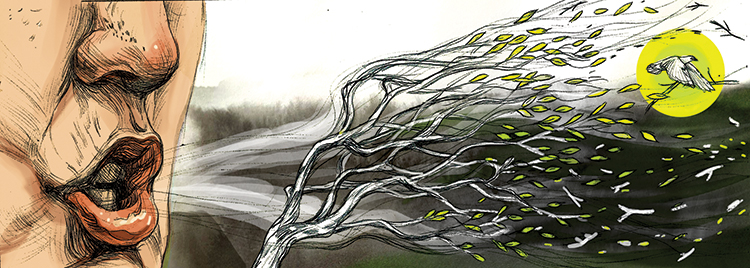Mend Your Ways
by Anna Herman
Buttons pop off. Sweaters snag. Jeans wear out. So, unless tattered clothes are your fashion preference, resolve to get to know a needle and thread.
(Way) back when I was in junior high school, one was required to take sewing, home-ec and shop classes. At the time, it seemed pointless to select and follow sewing patterns or turn wood blocks into cutting boards—things we could buy so easily. Looking back, those might have been the most practical classes I ever took.
One or two stitches are all you need for most repairs—easily learned via an online or in-person show-and-tell. A sewing kit with several needles, a few buttons, safety pins and various thread colors can be purchased at the hardware store, most big-box department stores and every pharmacy chain for $5 to $10. Many of us benefit from a good pair of reading glasses when threading a needle, and I highly recommend the little wire needle-threading tool that is always included in even the most basic sewing kit.
The trick with most clothing repairs is to work on the inside of the garment so the repair is hidden. Pin the hole or rip carefully, and then view it from the outside and make your adjustments before you start stitching. If the rip is too large or wide to join together, a patch of some sort can be purchased or made.
I keep sections of favorite clothes of varied weights and colors that are well beyond repair to use for patching. I took two pairs of jeans so well worn that my thighs felt a breeze and turned them into one well-patched and perfectly broken-in pair, with patches to spare.
Buttons are simple to replace—just line up the new button on the old spot. The little buttonholes are your guide to affix the button to the cloth. Go back and forth through the holes six to 10 times, alternating and crisscrossing if there are four holes, until the button seems tight. In the space between the button and the cloth, wrap thread to reinforce the shank (the little loop on the button) before the final few stitches. Tie off a knot, trim extra thread, and you are done.
Clothing companies even provide extra buttons with new garments because they know you’ll need them. Stash these random buttons in a jar in your sock drawer until needed. If you don’t have a perfect match for color, match the button for size because it needs to fit with the existing buttonhole.
Holes in sweaters can be sewn or darned with thread or, better yet, darning yarn. For a sweater with many moth holes, consider using contrasting multicolored yarns to create a new patchwork look, while retaining the coziness that only a favorite sweater can offer.
If you’ve got a stack of clothes needing repair, make an evening of the task. Handwork lends itself to socializing with family or friends—you will have to look regularly at what you are doing, but there isn’t much concentration required.
Just starting? There is surely someone in your family or on your block to show and tell. Don’t ask your parents to sew on your button—honor their knowledge by giving them a chance to share it. Lacking a personal mentor? The internet is rife with advice and how-to pictorials.
The adage about a stitch in time is apt. That small gap in the seam of your pants will just get wider the next time you bend over. You can only sew on the button that popped off if you can still find it when you are ready to do so.
Your local dry cleaner can surely do these tasks for you—but consider mending your ways and trying to do it yourself.










